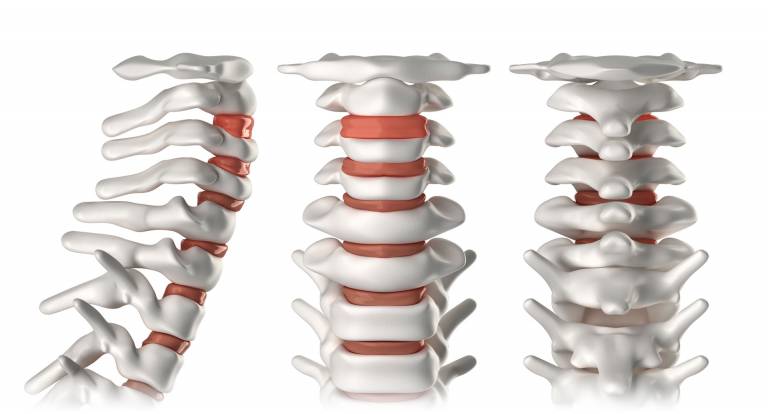Cervical Decompression: A Comprehensive Guide

Dealing with persistent back pain, especially in the neck, can be physically and emotionally taxing. Some of the dangerous and potentially disabling conditions such as cervical myelopathy can have misleading symptoms such as balance problems, hand coordination problems, difficulty holding fine objects, and lower manual dexterity. For those with symptoms of nerve pain and difficulty in arm and leg movements, contending with issues like herniated discs or spinal stenosis, finding appropriate remedies like cervical decompression becomes critical.
What is cervical decompression?
Cervical decompression is a surgical procedure to relieve pressure on the spinal nerves and cord in the neck (cervical spine). This surgery is often recommended for individuals experiencing chronic neck pain or issues with movement or sensation of hands and legs due to compressed spinal nerves.
The goal of cervical decompression is to alleviate pain, numbness, tingling, weakness, and other symptoms caused by compression. This relief is achieved by creating space for the nerves and spinal cord. Compression of the cervical spine may be due to:
- Herniated discs: When a disc’s inner, gel-like material bulges, it can press on nerve roots.
- Bone spurs: Overgrowth of bone can also narrow the spinal canal and foramen, where nerves exit the spinal cord.
- Ligament thickening: Over time, ligaments in the spine can thicken and compress nerves.
- Spondylosis: This condition refers to general wear and tear on the spine, causing the narrowing of the spinal canal and foramen.
Types of cervical decompression
There are several types of cervical decompression services, each with its own technique.
Anterior Cervical Discectomy and Fusion (ACDF)
ACDF is a surgical procedure designed to relieve nerve or spinal cord compression in the cervical spine by removing part of the herniated disc. In some cases, the affected vertebrae are fused to stabilise the spine and maintain proper alignment. This method is an effective approach for cervical spine decompression, addressing pain and neurological symptoms.
Posterior Cervical Laminectomy/Foraminotomy
This technique involves removing the lamina (the bone protecting the spinal canal) and enlarging the foramina (nerve passageways) to alleviate pressure on the nerves. It is an option for cervical decompression, creating more space to reduce nerve irritation and improve overall neck and arm function.
Minimally Invasive Cervical Decompression
Minimally invasive cervical decompression uses smaller incisions and specialised tools to relieve pressure on the spinal canal and nerves with minimal tissue disruption. Our centre offers motion-conserving cervical endoscopic decompression as an alternative to fusion or disc replacement for certain cervical compressive conditions. This innovative technique ensures effective cervical spine decompression while preserving spinal mobility.
Cervical Decompression Therapy
Cervical decompression therapy is a non-surgical method to relieve pressure on the cervical spine. This conservative treatment uses traction devices or decompression tables to gently stretch and separate the vertebrae, improving blood flow and alleviating pain. This option is suitable for those seeking a less invasive approach.

Who is a candidate for cervical decompression surgery?
Not everyone with neck pain is a candidate for cervical decompression surgery. Usually, individuals who have been diagnosed with conditions such as herniated discs, spinal stenosis, or degenerative disc disease may be considered candidates. Many of our patients with neck pain are treated with conservative treatment such as physiotherapy and some require minor outpatient procedures such as annuloplasty( discoplasty), radiofrequency ablation and/or injections.
An assessment by your healthcare provider will determine if cervical decompression is the right course of action for you.
To find out if cervical decompression is suitable for you or a loved one, book an appointment with our specialist.
How is cervical decompression therapy different from spinal surgeries?
Cervical decompression therapy stands out from spinal surgeries because it focuses on relieving pressure on the spinal cord and nerves without surgery. It involves using equipment to manually stretch the spine, create negative pressure around the discs, and help bulging or herniated discs retract.
Spinal surgeries are invasive procedures that call for incisions and manipulate or remove bone and tissue. Examples include laminectomy, foraminotomy, fusion, and discectomy. These surgeries carry greater risks of infection, bleeding, and nerve damage.
What conditions or symptoms may indicate the need for cervical decompression services?
Several conditions and symptoms may suggest the need for cervical decompression services, including persistent neck pain, radiating arm pain, weakness, tingling, or numbness.
Your healthcare provider will thoroughly examine your condition and suggest imaging tests to diagnose the exact cause of your symptoms.
What imaging tests are used to diagnose the need for cervical decompression?
Common imaging tests used in diagnosing the need for cervical decompression include X-rays, MRI (Magnetic Resonance Imaging), and CT (Computed Tomography) scans.
These tests provide detailed images of the cervical spine, allowing healthcare professionals to identify the source of compression and plan an appropriate treatment strategy.
Are there non-surgical alternatives to cervical decompression?
In some cases, non-surgical alternatives may be explored before considering cervical decompression. These conservative alternatives include medication, and lifestyle adjustments.
However, if these treatments fail to provide relief, cervical decompression surgery may be considered.
How long is the recovery period after cervical decompression surgery?
The recovery period after cervical decompression surgery varies among individuals. Generally, patients can resume light activities within a few weeks, gradually progressing to more strenuous activities over several months.
Follow the personalised guidelines your healthcare team provides to facilitate a smooth recovery.
What is the difference between decompression and fusion in the cervical spine?
The recovery period after cervical decompression surgery varies among individuals. Generally, patients can resume light activities within a few weeks, gradually progressing to more strenuous activities over several months.
Follow the personalised guidelines your healthcare team provides to facilitate a smooth recovery.
What do you recommend for cervical spine instability treatment?
Treatment for cervical spine instability depends on the severity and underlying cause. In cases of mild instability, non-surgical approaches such as physical therapy and neck bracing may be recommended.
For more severe cases, cervical decompression or fusion may be considered to address instability and relieve associated symptoms.
What is the cost of cervical decompression in Singapore?
The cost of cervical decompression in Singapore can vary based on the facility, the surgeon’s fees, and any additional medical services required. It is best to consult your healthcare provider and insurance companies to comprehensively understand the overall cost and potential coverage.
Cervical compression services in Singapore
Cervical decompression is a surgical option for individuals struggling with neck pain and related symptoms. To determine if the procedure is suitable for your needs and circumstances, always consult a qualified healthcare professional.
At Achieve Spine & Orthopaedic Centre, our orthopaedic surgeon has over 15 years of experience in diagnosing and treating cervical spine conditions in Singapore. Our commitment ensures that you receive the best possible care throughout your journey to recovery.
Schedule a consultation today for cervical decompression services.

Wu Pang Hung
ABOUT AUTHOR
Dr. Wu Pang Hung is an experienced orthopaedic and spine surgeon in Singapore, specialising in both uniportal and biportal endoscopic spine procedures for complex cervical, thoracic, and lumbar spinal conditions. With over 10 years in the field, he is actively involved in numerous spine societies and contributes to several international journals and textbooks. Dr. Wu has also received specialised training in spine surgery across Canada, South Korea, Japan, and Germany.
Contact Us
WHATSAPP US @+65 9746 6178
CALL US @+65 9746 6178
MAKE AN APPOINTMENT
Frequently Asked Questions (FAQs)
How is cervical decompression different from other spinal surgeries?
Cervical decompression is distinct because it focuses on relieving pressure on the spinal canal or nerves while preserving natural spine movement. Unlike fusion procedures, it maintains mobility whenever possible. Learn more about various spine treatments by visiting our Spine Procedures and Surgery page.
What are the risks and complications associated with cervical decompression?
While complications are rare, risks include infection, bleeding, nerve damage, or spinal fluid leaks. Consulting an experienced specialist can significantly minimise these risks. Visit our About page to understand our team’s expertise in handling these procedures.
Are there any restrictions or lifestyle changes following cervical decompression surgery?
Patients are often advised to avoid strenuous activities and follow post-operative care guidelines, but most lifestyle changes are temporary. For more tips on recovery and care, explore our blog.
How long does cervical decompression surgery typically take?
The duration depends on the complexity of the case but usually ranges from 1 to 3 hours. Curious about others’ experiences? Check out our testimonials page.
Are there age limitations for undergoing cervical decompression surgery?
Age alone is not a limiting factor. A thorough assessment of overall health and the specific cervical condition determines eligibility. Schedule a consultation via our contact page for a personalised evaluation.
Is physical therapy recommended after cervical decompression surgery?
Yes, physical therapy is often recommended to enhance recovery, rebuild strength, and restore flexibility. Learn how we integrate post-treatment care here.
